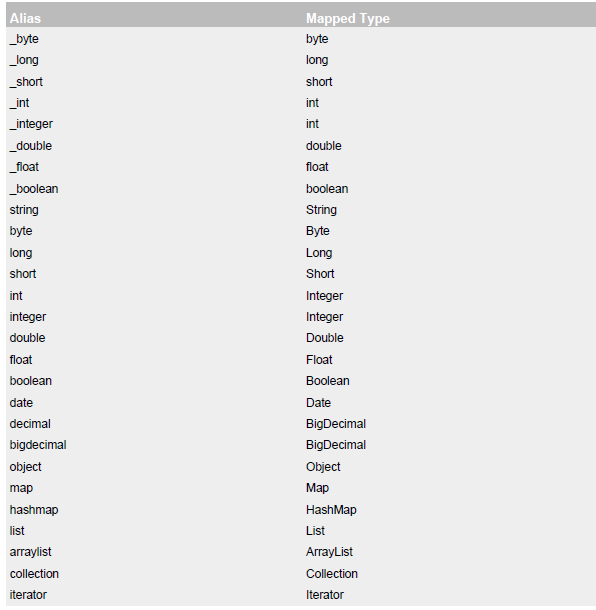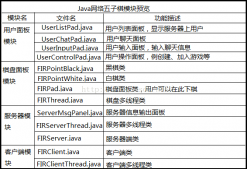最近一直把collection和association弄混,所以为了增强自己的记忆,就撸一个关系出来算是总结罢了
1. 关联-association
2. 集合-collection
比如同时有user.java和card.java两个类
user.java如下:
|
1
2
3
4
5
6
7
|
public class user{private card card_one;private list<card> card_many;} |
在映射card_one属性时用association标签, 映射card_many时用collection标签.
所以association是用于一对一和多对一,而collection是用于一对多的关系
下面就用一些例子解释下吧
association-一对一
人和身份证的关系
下面是pojo
|
1
2
3
4
5
|
public class card implements serializable{ private integer id; private string code;//省略set和get方法.} |
|
1
2
3
4
5
6
7
8
9
|
public class person implements serializable{ private integer id; private string name; private string sex; private integer age; //人和身份证是一对一的关系 private card card;//省略set/get方法.} |
下面是mapper和实现的接口
|
1
2
3
4
5
6
7
|
package com.glj.mapper;import com.glj.poji.card;public interface cardmapper { card selectcardbyid(integer id);} |
|
1
2
3
4
5
6
7
8
9
|
<?xml version="1.0" encoding="utf-8"?><!doctype mapper public "-//mybatis.org//dtd mapper 3.0//en" "http://mybatis.org/dtd/mybatis-3-mapper.dtd"><mapper namespace="com.glj.mapper.cardmapper"> <select id="selectcardbyid" parametertype="int" resulttype="com.glj.poji.card"> select * from tb_card where id = #{id} </select></mapper> |
|
1
2
3
4
5
6
7
|
package com.glj.mapper; import com.glj.poji.person; public interface personmapper { person selectpersonbyid(integer id);} |
|
1
2
3
4
5
6
7
8
9
10
11
12
13
14
15
16
17
18
19
|
<?xml version="1.0" encoding="utf-8"?><!doctype mapper public "-//mybatis.org//dtd mapper 3.0//en" "http://mybatis.org/dtd/mybatis-3-mapper.dtd"><mapper namespace="com.glj.mapper.personmapper"> <resultmap type="com.glj.poji.person" id="personmapper"> <id property="id" column="id"/> <result property="name" column="name"/> <result property="sex" column="sex"/> <result property="age" column="age"/> <association property="card" column="card_id" select="com.glj.mapper.cardmapper.selectcardbyid" javatype="com.glj.poji.card"> </association> </resultmap> <select id="selectpersonbyid" parametertype="int" resultmap="personmapper"> select * from tb_person where id = #{id} </select></mapper> |
personmapper.xml 还使用association的分步查询。
同理多对一,也是一样
只要那个pojo出现private card card_one;
即使用association
collection 一对多和association的多对一关系
学生和班级的一对多的例子
pojo类
|
1
2
3
4
5
6
7
8
9
10
11
12
13
|
package com.glj.pojo; import java.io.serializable;import java.util.list; public class clazz implements serializable{ private integer id; private string code; private string name; //班级与学生是一对多的关系 private list<student> students;//省略set/get方法} |
|
1
2
3
4
5
6
7
8
9
10
11
12
13
|
package com.glj.pojo;import java.io.serializable;public class student implements serializable { private integer id; private string name; private string sex; private integer age; //学生与班级是多对一的关系 private clazz clazz;//省略set/get方法} |
|
1
2
3
4
5
6
7
8
9
10
11
12
13
14
15
16
17
18
19
20
21
22
23
|
<?xml version="1.0" encoding="utf-8"?><!doctype mapper public "-//mybatis.org//dtd mapper 3.0//en" "http://mybatis.org/dtd/mybatis-3-mapper.dtd"><mapper namespace="com.glj.mapper.clazzmapper"> <select id="selectclazzbyid" parametertype="int" resultmap="clazzresultmap"> select * from tb_clazz where id = #{id} </select> <resultmap type="com.glj.pojo.clazz" id="clazzresultmap"> <id property="id" column="id"/> <result property="code" column="code"/> <result property="name" column="name"/> <!-- property: 指的是集合属性的值, oftype:指的是集合中元素的类型 --> <collection property="students" oftype="com.glj.pojo.student" column="id" javatype="arraylist" fetchtype="lazy" select="com.glj.mapper.studentmapper.selectstudentbyclazzid"> <id property="id" column="id"/> <result property="name" column="name"/> <result property="sex" column="sex"/> <result property="age" column="age"/> </collection> </resultmap></mapper> |
|
1
2
3
4
5
6
7
|
package com.glj.mapper;import com.glj.pojo.clazz;public interface clazzmapper { clazz selectclazzbyid(integer id);} |
clazzmapper使用到了集合-collection 即为一对多,一个班级面对多个学生
|
1
2
3
4
5
6
7
8
9
10
11
12
13
14
15
16
17
18
19
20
21
22
23
|
<?xml version="1.0" encoding="utf-8"?><!doctype mapper public "-//mybatis.org//dtd mapper 3.0//en" "http://mybatis.org/dtd/mybatis-3-mapper.dtd"><mapper namespace="com.glj.mapper.studentmapper"> <select id="selectstudentbyid" parametertype="int" resultmap="studentresultmap"> select * from tb_clazz c,tb_student s where c.id = s.id and s.id = #{id} </select> <select id="selectstudentbyclazzid" parametertype="int" resultmap="studentresultmap"> select * from tb_student where clazz_id = #{id} </select> <resultmap type="com.glj.pojo.student" id="studentresultmap"> <id property="id" column="id"/> <result property="name" column="name"/> <result property="sex" column="sex"/> <result property="age" column="age"/> <association property="clazz" javatype="com.glj.pojo.clazz"> <id property="id" column="id"/> <result property="code" column="code"/> <result property="name" column="name"/> </association> </resultmap></mapper> |
|
1
2
3
4
5
6
7
|
package com.glj.mapper;import com.glj.pojo.student;public interface studentmapper { student selectstudentbyid(integer id); } |
studentmapper则是与班级为多对一关系,所以使用了关联-association
嗯,希望我以后又不记得二者的关系时,能感谢现在总结的自己
附上一张mybatis的类型别名图

以上就是本文的全部内容,希望对大家的学习有所帮助,也希望大家多多支持服务器之家。
原文链接:http://199604.com/709


















